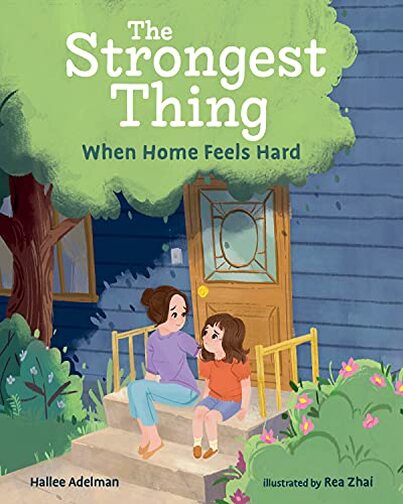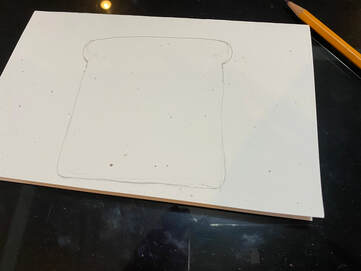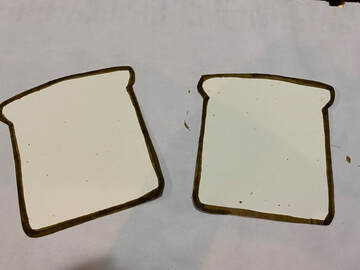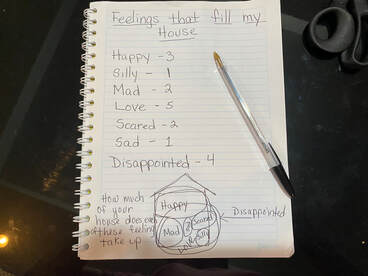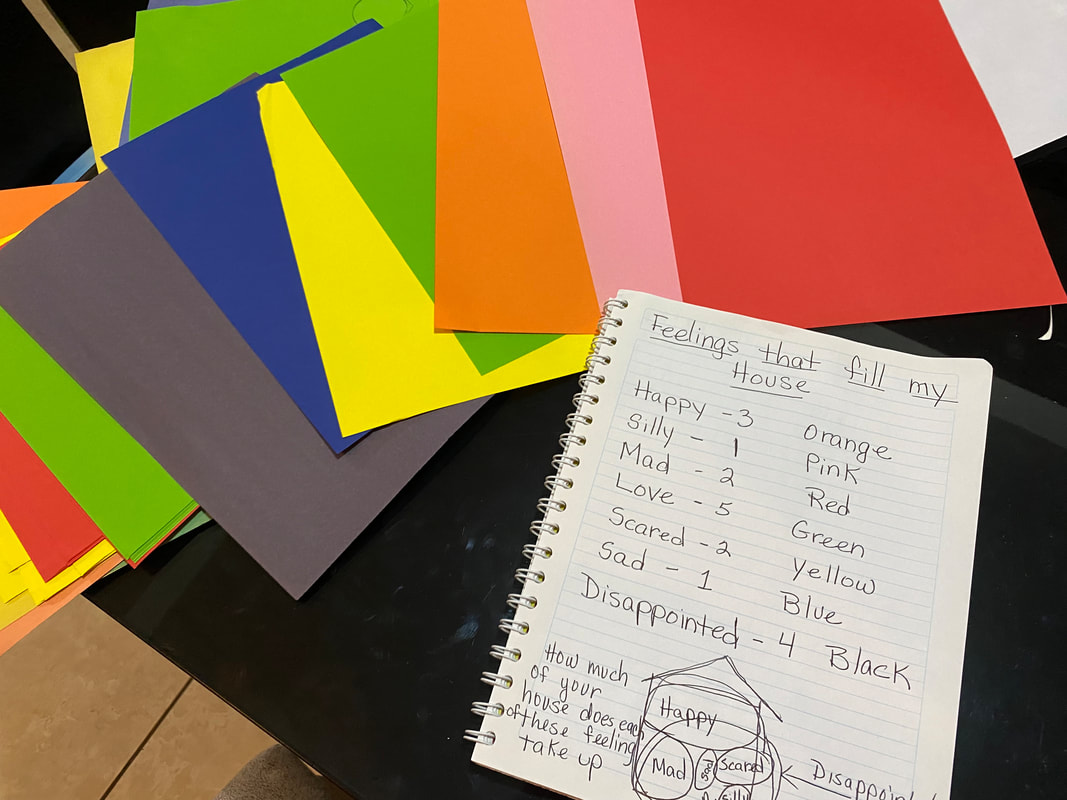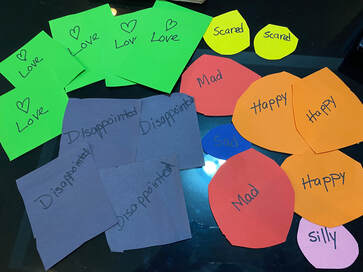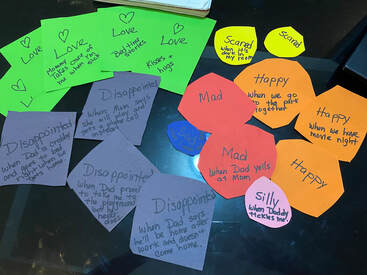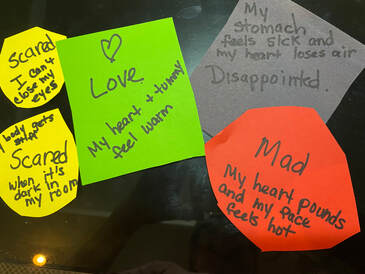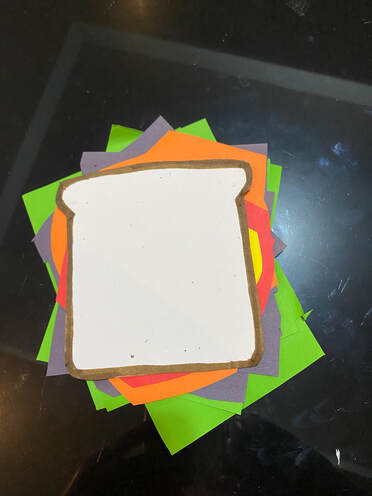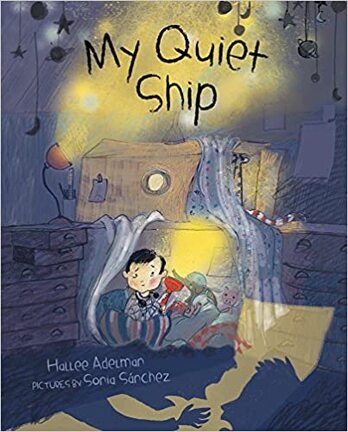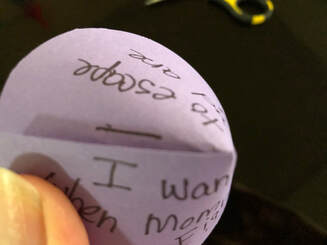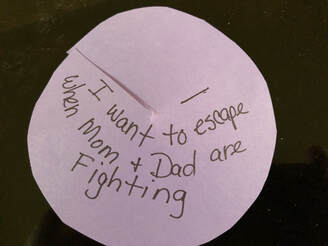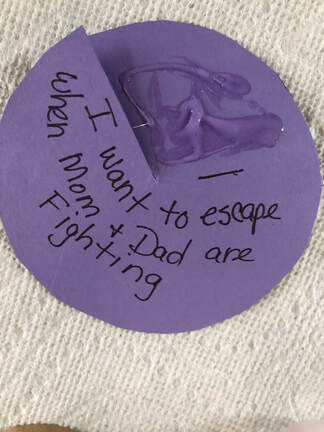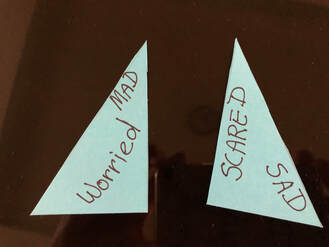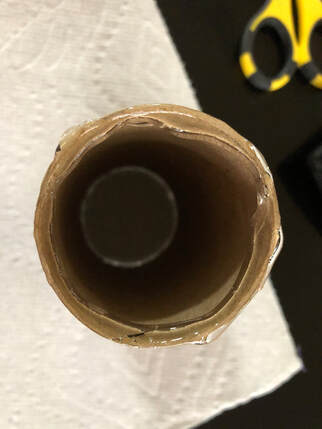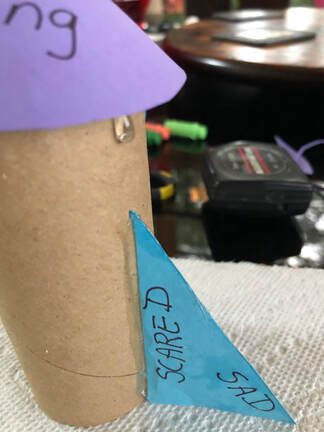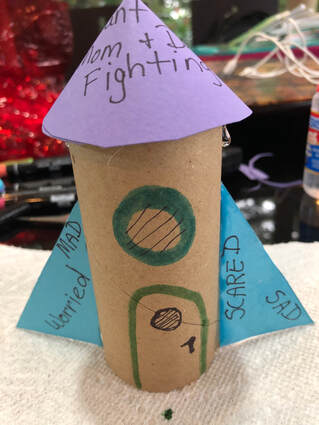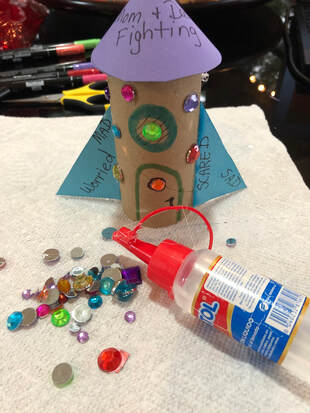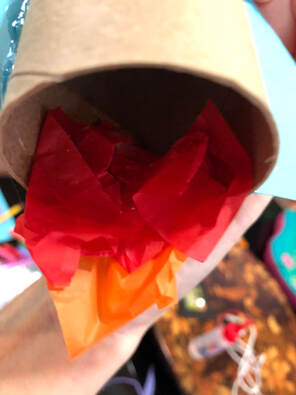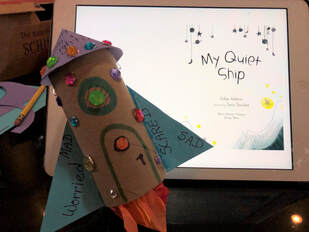A Book Review of The Strongest Thing
The book features a young girl, Sera, who finds her home a hard place to be due to her Dad's problems with anger control. He raises his voice and blames his family for things in which they have no control. At the height of his anger, he leaves the house and slams the door so hard, that the glass breaks. This is scary for Sera and creates anxiety as she anticipates what will happen when he returns. Sera thinks of her dad as "the strongest thing," because his anger seems so big, it fills up the house. So big, in fact, that, "...my house looked too small for me to fit back inside it." However, in contrast when approaching her school, Sera describes it as, " ...a shining castle on the hill, big and bright and cheery." The contrast in her description between her house and her school, shows us that Sera experiences her school as a haven. The familiar people and routines are comforting to her, and elevate her mood. The school day distracts her from thinking about the scary things at home. However, when the teacher announces that the school day is half over, Sera's mood takes a nose dive. She becomes angry and those sensations in her body, that she experienced during the incident with her father, return. "My shoulders sank like a ship, and my belly squirmed with worry." Ms. Adelman not only focuses on Sera's feelings, but the specifics of how that feeling affects her body. These sensations are described using similes which provides a clear mental picture for the reader to fully understand what Sera is experiencing. In order to name and recognize our feelings, we need to develop the skill of tuning into our bodies. This allows us to recognize those feelings through the sensations we're experiencing. After stomping around with her anger, Sera seemed to be calming herself by painting. A classmate then accidentally slams the door and startles her. It reminds her of the door slam and broken glass at home. When this happens, her painting gets ruined and she begins to act "like the bully at home," -blaming, yelling, pointing, seething. Her feelings were so big, that she felt like "the strongest thing." After observing her classmate's emotional reaction to her behavior, she knew exactly how he felt. At that point, Sera realizes that BIG ANGER was NOT the strongest thing. She then apologized, wishing her Dad would do the same for her. After the incident, she feared the worst from the teacher. However, he responded with kindness and support, which is an excellent model for teachers reading this book. His reaction also served as a model for the students, as they then offered support too. Due to the other's reactions, Sera learned that "the strongest thing" is actually being calm and kind. The last page of the book leaves the reader with a powerful message. The teacher and the mother are together in the classroom offering support to Sera. The teacher approached this situation as a team player with the parent. He did NOT call or send a note home about Sera's poor behavior. He solicited the parent to come in and assist him in supporting Sera. Care and compassion in place of punishment. Beautiful. A great message for teachers, parents and kids. There are so many important mental health messages portrayed in this book. However, I'm going to zoom in on the importance of emotional regulation in children AND adults. Adults who cannot regulate their feelings, especially their anger, create cycles of trauma in families. One of the most important things to begin learning as a child and throughout one's life is to regulate your emotions. If this skill is not mastered by adulthood, it will negatively affect a person's relationships, family, jobs, and overall happiness. Then, without the proper modeling and teaching, the cycle continues with their children. This is the reason why it is crucial to teach our kids about the different emotions, how they feel in their bodies, what makes them feel that way, and what coping skills work for them. Kids need to be allowed to express their feelings openly when younger, so when they are adults, they will have had much experience at managing them. By doing this, the trauma will not pass on to another generation. Both men and women can have problems with emotional regulation, however, anger control issues are more prevalent in boys and men. The reason for this is that traditionally, anger has been the only emotion that boys have been allowed to express. It is the emotion that is considered more "manly." Even now in 2022, some boys are still getting the message, "big boys don't cry," or "you're acting like a girl," when expressing any emotion besides anger. By keeping all of the feelings besides anger inside - sadness, hurt, disappointment, fear, etc.- those feelings get wrapped up in one big package called ANGER and that anger grows exponentially inside them. For this reason, we need to teach our boys about ALL OF THE FEELINGS. and ALLOW, AND EVEN ENCOURAGE THEM, TO EXPRESS THEM OPENLY. By doing this, they can practice coping and regulating, so by the time they are adults, they will be experienced emotional regulators. Then, and only then, will they grow up to be men who don't continue the cycle of anger and perpetuate trauma in their families. Instead, they will act as models for their children for dealing with emotions appropriately. That is the cycle we want to perpetuate. If, as a society, we understand that expressing and understanding all of the feelings makes us stronger, not weaker, the more homes like Seras' will have plenty of room for love and happiness. If you wish to purchase this book, or check out the many other mental health books written by this author, visit Hallee Adelman's website HERE. An Activity Idea for The Strongest Thing MY HOUSE IS LIKE A SANDWICH Sera describes her house "like the middle of an old sandwich, squished and dark and icky." For this month's activity, we're going to use this simile, make a sandwich and have the child fill it with the feelings in their house. NOW, LET'S BUILD OUR OWN SANDWICH! Materials: -White or beige cardstock or construction paper -Construction paper in many colors -pencil -scissors -brown and black markers
6 Comments
A Book Review of My Quiet Ship
Quinn becomes the commander of his Space Ship, directs his crew (stuffed animals), which gives him a sense of control in a situation in which he feels helpless and scared. Quinn's scary situation is his parent's loud arguing. This book can be helpful to kids in a variety of difficult situations, even if it is coping with their baby brother crying or sensory overload. The Space Ship is a peaceful place where Quinn can go into his mind to help calm himself and to identify his feelings. The Space Ship is Quinn's haven. This book can encourage readers to use their own imaginations and create their own havens to help them cope. It is helpful for children and adults to pull themselves away from the source of their big feelings temporarily and try to find peace within themselves. It is similar to the concept of a Safe Space in schools where a child goes to a quieter part of the classroom with comforting objects in order to re-group, ponder and get in touch with their feelings. Quinn also tries to draw, which is another great coping mechanism to model to the reader. In the story, the arguing became so loud and Quinn's feelings became so big, that his coping strategies no longer worked. Eventually, he gathered the strength to confront his parents and express himself about how their yelling was making him feel. This is important as others may not be aware of how their behavior is making you feel unless you tell them. Through the story, the author acknowledges the strength and bravery it takes to confront a situation and express your feelings. Expressing feelings is the most important part of this process. When Quinn expressed his feelings, it had the positive effect of making his parents aware and most importantly, getting his needs met. Quinn describes how his feelings are affecting his body, which is a great way for kid's to start to identify their own emotions. For example, "...from the sounds that hurt my ears and make my heart ache." and "...the sounds that make my stomach sick." Identification of feelings based on how it feels in your body is crucial. Through her illustrations, Sonia Sánchez gives the reader a sense of turmoil that is experienced through Quinn. By the end of the story, Ms. Sánchez uses her illustrations to create a sense of calm in the reader. She captures the feelings of the characters very well, which pulls the reader in to the emotion of the story. I highly recommend this book for teaching coping skills and the importance of expressing feelings, especially with kids in difficult situations. It can lead to deeper conversations about what the reader experiences in their life, how they can cope and how they can use their skills to gain control over their situations. I would like to caution readers on a couple of points in the story. Escaping through imagination excessively, without confronting and addressing the feelings, can become a maladaptive strategy to respond to trauma and lead to dissociative symptoms later in life. Additionally, there are trauma situations in which it would not be safe for the child to confront the adults about how they are feeling and could lead to further abuse. In this situation, help the child develop a list of other safe adults they can access for help, if the situation is out of hand and safety issues are prevalent. You can access Hallee Adelman's website to purchase her book or check out other books by this author here. Activity Idea for My Quiet ShipConstruct a Space Ship with the child as a means to explore events that make them want to escape and to help them identify related feelings. These questions may help get the exercise started. 1. What is Quinn trying to escape from when he takes off in his Space Ship? 2. What feelings does it give him when his parents argue? 3. Do you ever feel a need to escape from something that gives you big feelings like Quinn? 4. What big feelings do you have when that happens? 5. What would be your best way to escape in your imagination? 6. What could you do to make others aware of how you feel and to get what you need from them? Materials Needed: Empty toilet paper roll cardstock or construction paper red/orange tissue paper or construction paper scissors silicone or other strong glue tape markers or crayons gems/stickers (optional)
|
Follow me on Twitter, Pinterest and LinkedIn
Categories
All
|
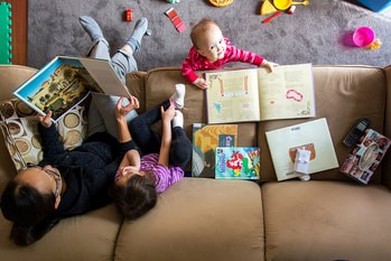
 RSS Feed
RSS Feed
